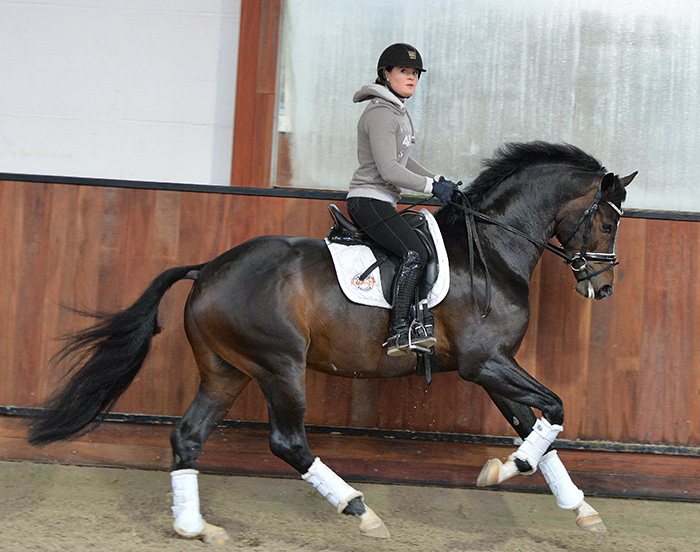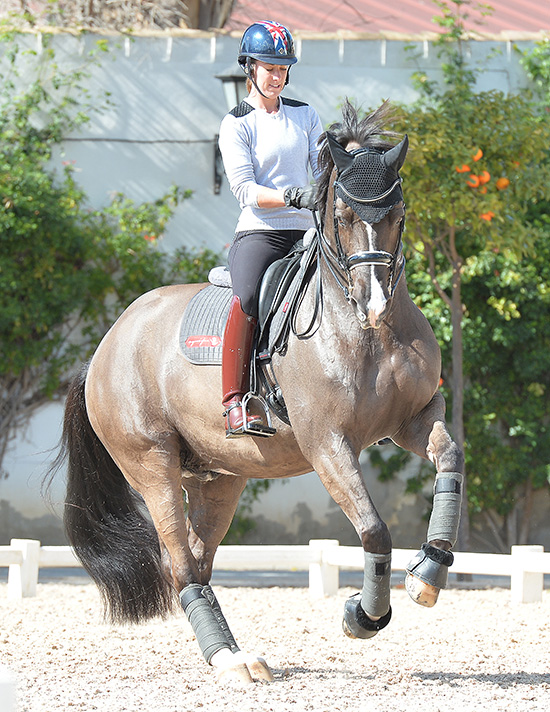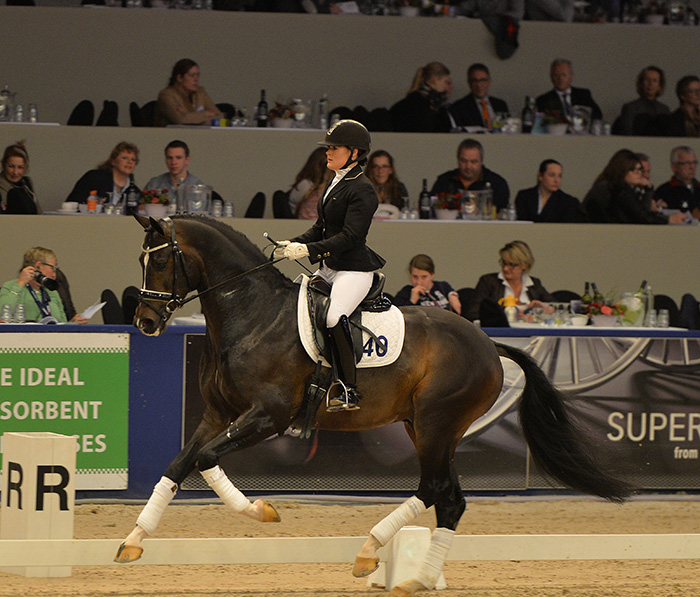Is the best canter always three-beat? Can a four-beat canter ever be correct? Johan Hamminga explains, and Jen Sekreve and a young Gotcha Utopia illustrate.
“There is a lot of uphill tendency in this picture, especially for a young horse, the wither is much much higher than the croup, the horse is steady on the bit, on the vertical, it could be a little bit higher in the poll perhaps. Especially his right hind leg is far under the body, under the vertical line of Jennifer, and is closer to the ground than the left front leg, this is still a true canter. Sometimes in the canter, the outside front leg of the diagonal is earlier on the ground than the inside hind leg, and then the horse is out of balance. Here you see the inside hind leg is for a very short moment, coming earlier to the ground, that is the reason he is so uphill. The canter sequence is outside hind leg, diagonal pair, inside front leg, but when the diagonal is a little broken because the inside hind leg is for a short moment, earlier on the ground, then you have the best canter there is.
This is also the canter you need in the pirouettes.
But if the front leg of the diagonal is a moment earlier to the ground, then you are out of balance, and have a very bad canter.”
Gotcha was licensed in 2014
“When it is in four beats in this way, then that is positive for me, when you are dancing in the rhythm, in the beat, with your partner, then you are a good dancer, but when you are out of the beat, out of the rhythm, then your partner says I don’t want to dance with you. Three-beat is normal for a canter, but sometimes the horse is actually in four-beat, if his inside hind leg (of the diagonal) is for a short moment coming earlier on the ground. But when his outside front leg is earlier on the ground, then it is out of the beat, the horse is on the forehand, and that is negative.”
Gotcha, or to give him his full title, Gotcha-Utopia (since he is out of the famed Utopia line of mares) is a licensed KWPN stallion. He is by Ziesto, who suddenly became Glock’s Ziesto when the Glocks purchased Edward Gal and Hans Peter Minderhoud and set about buying ponies for them to ride.



